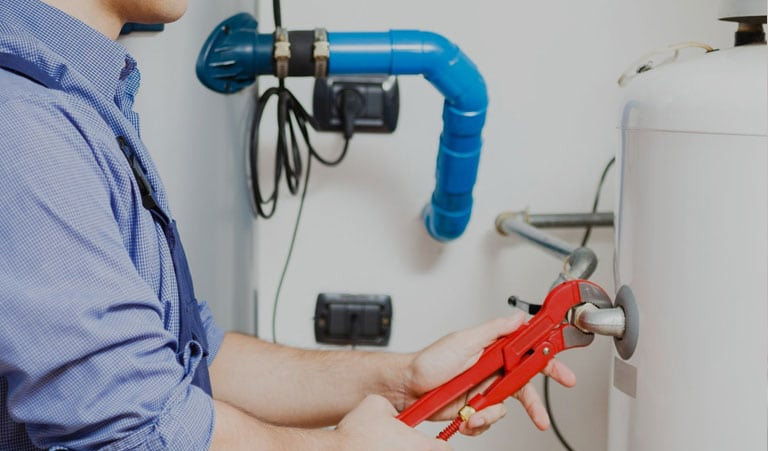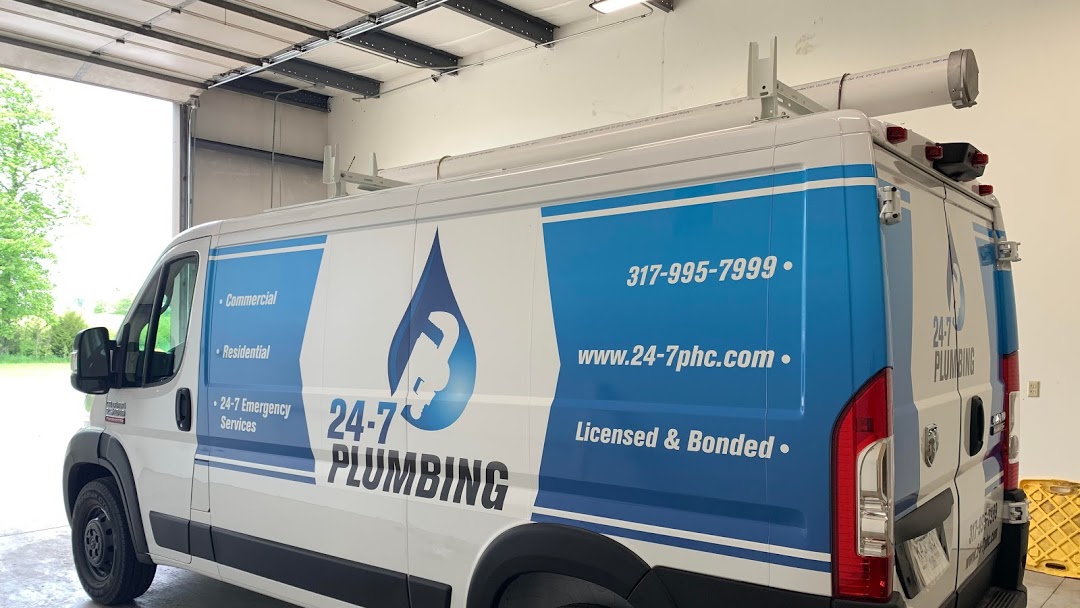When Your Hot Water Heater is Leaking
The hot water heater is an indispensable part of a modern home, and happily, a hot water heater tends to be a resilient piece of equipment that can go for years without giving a homeowner any trouble. However, like any device subject to wear and tear, it can start leaking eventually, and if it does, you’ll want to deal with the problem expeditiously. Even a seemingly small amount of water can do a great deal of damage.

Is It Really the Water Heater Leaking?
As you begin, you should assess whether the heater actually is the problem. Even if you found the water underneath it, the water may have come from somewhere else. To figure out the source, do the following:
- Wipe up the water and look at the hot water heater. Can you see any obvious leaks, or are the fittings are wet? Then ou’ve probably found your culprit.
- If the previous step doesn’t identify the problem, look for somewhere else the water may have come from. Perhaps you have a leaky window or pipe. Bear in mind that if your floor slopes even a little, the water may have traveled from the source of the leak downhill to where you found it.
- If you’re still not having any luck, put down some paper towels and come back in several hours or the next day. Are the towels wet? Then maybe the problem is the hot water heater.
If you do discover or have reason to suspect your have a leaking water heater, here are the things to do next:
Step #1: Turn Off the Water to Your Leaking Heater
You’ll find a dedicated shut-off valve on the cold-inlet pipe to the heater tank.
- If you have a ball-style valve, twist the handle 180 degrees.
- If you have a gate-style valve, turn it clockwise as it will go.
However, if the valve’s broken, the best way to keep the leak from causing extensive damage may be to cut off the flow of water to the whole house. The house should have a shut-off valve that will enable you to accomplish this.
Step #2: Kill the Power Running to the Hot Water Heater
- If you have a gas water heater, turn off the gas supply. Use the gas shut-off valve on the gas line.
- If you have an electric water heater, flip the breaker to Off to stop the flow of electricity.
Step #3: Find Out Where the Heater Is Leaking
Now that the flow of water has stopped and the hot water heater is safe to work on, you’re ready to look it over closely and find out exactly where the problem lies. Make the following checks:
- Inlets and outlets. How are the pipes that connect to the hot water heater? Examine the cold water intake and hot water output. If there are loose fittings, simply tightening them could solve your problem.
- The bottom of the hot water heater. Water can sometimes run down into the bottom of the water heater from damage higher up and give the impression that the problem is in the bottom when it’s really not. However, if the bottom of the water heater tank truly is cracked, it may need to be replaced.
- Drain valve. The drain valve is located near the bottom of the tank and should always be completely closed. In other words, it shouldn’t leak. If it is, however, it may just be that the washer inside needs replacing.
- Pressure relief valve. Located on top of the tank, this valve, which you have heard referred to as the T&P valve, releases pressure as a safety measure when there’s too much. If it’s leaky, however, you end up with water on your floor. In addition to checking the valve, check your thermostat. It’s set too high, that could be causing the excess pressure that is in turn causing excess stress on the pressure relief valve. The Department of Energy recommends that a hot water heater be set at 120 degrees. Most manufacturers recommend 140 degrees.
- Water pressure. If the general water pressure in your house is too high, that can stress and damage your heater as well. You can check your water pressure with a pressure gauge at the hose bib outside the house. (The water pressure should not be over 80 PSI as per code. If it’s over 100 PSI, that’s way too high and reason to consider a pressure reducing valve.)

Draining Your Leaking Heater
A professional will drain your hot water heater tank as a matter of course as he starts work, but if it’s leaking badly, you may not want to wait and risk serious water damage. Here are the steps to take to drain the tank yourself:
- Attach a hose to the drain valve and run it outside. The other end of the hose should go in a sink or gutter drain. If you simply drain the tank onto your lawn, rust and sediment can kill your grass, and if you drain it onto your driveway, they can stain it.
- Open the drain valve.
- Pull up on the pressure relief valve.
The water should now run out.
Finally, if you feel uncertain or uncomfortable about performing any of these tasks, don’t hesitate to contact a professional. The expert will be happy to talk you through them on the phone or come out to your home and perform them him- or herself as needed.
